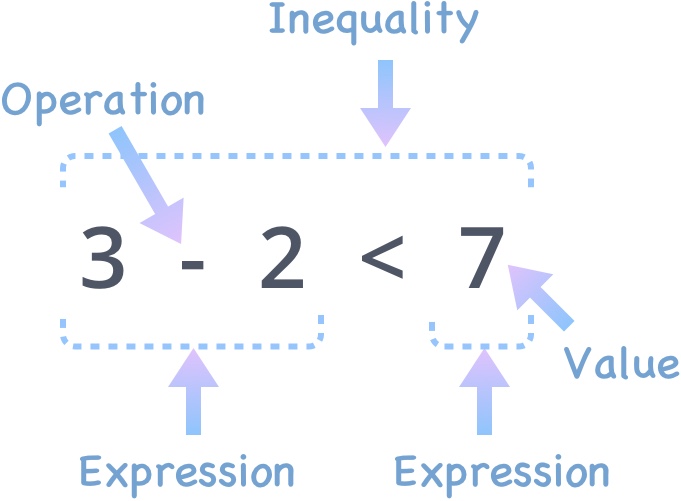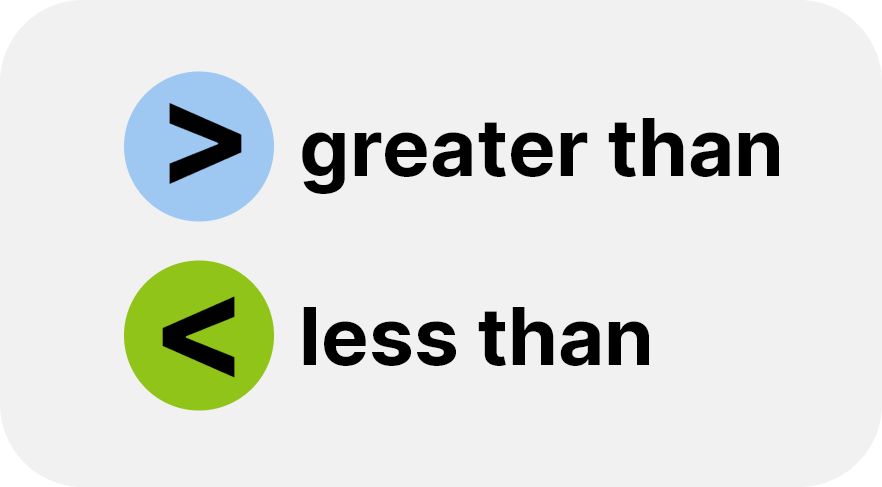How to Solve Inequalities With Subtraction
In an earlier lesson, you learned about inequalities with addition.
Inequalities are statements that show two expressions are not equal.
We use inequality symbols to show which side is bigger.
We use the greater than symbol > when the value on the left 👈 side is bigger than the value on the right 👉 side.
Use the less than symbol < when the value on the left side is smaller.
Simplifying Expressions
What comparison symbol will make this statement true? 🤔
To figure it out, we need to simplify the expressions.
To simplify means to perform the operations in each expression until there is nothing left to do, and only a value is left.
Let's simplify the left side:
Tip: rewrite your equation after each simplification.
Since the right side is already in its simplest form, we can now compare the two sides.
Is the left side bigger or smaller than the right side? 🤔
Yes. 627 is smaller than 637.
So we use the less than symbol to complete the inequality.
Great job! 🎉
Another Example
What comparison symbol makes the statement true?
First, we simplify the expressions on both sides.
Now, let's compare the two values.
3,440 is bigger than 3,430.
So we use the greater than sign to complete our inequality statement!
Fantastic! 😀
Missing Number in Inequalities
There are times when the inequality symbols are given, but one number is missing.
How can we find the missing number? 🤔
Let's look at an example.
Which number will make the inequality true?
Let's test the first number.
This statement is true because 1,675 is bigger than 1,475. ✅
Now, we test the second number.
This statement is also true because 1,575 is bigger than 1,475. ✅
Both numbers make the inequality true. 👍
Excellent work!
Now, ace the practice to help you master inequalities with subtraction. 💪
1,000 Create Credits is worth $1 in real AI compute time.
1 Create Credit is enough to get 1 question answered, or to generate 1 image from text, in the tools tab.











